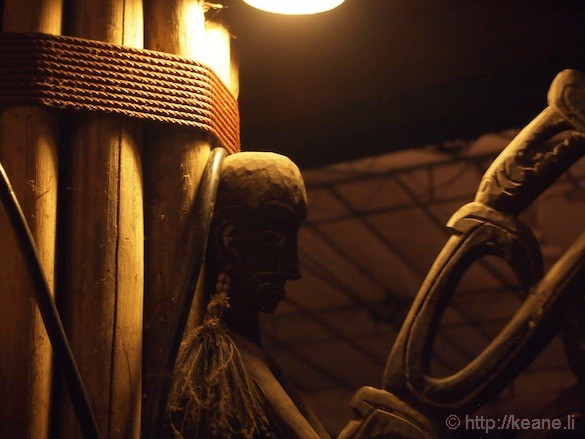Occasionally I’ll write a reference post for the independent musician based on my own personal band experience. These are the points of advice I wish I had when I first started. If I’ve missed anything, I gladly invite you to contribute by adding comments, so that others, including myself, can learn from your experience as well. And please check out my band, Festizio, and connect with us on Facebook and Twitter.
THE FIRST GIG
If you haven’t performed before, the first show can be intimidating. With images of professional musicians recalled in mind, you’ll inadvertently make an attempt on living up to the musicians you admire. The first, and probably most comforting, bit of wisdom is knowing that everyone is scared the first time. If you give a damn about what you’re doing, it’s only natural to feel self-conscious. And that’s okay. The trick is to remember why you’re performing in the first place (hopefully you love music) and to focus on having fun, because more often than not, the audience wants you to succeed.
Understanding Your Venue
It’s important to take into account the type of venue and, consequently, the type of audience you’re about to perform for. There are essentially four types of settings you’re most likely to encounter when you first start out:
– Traditional club
– Small bar, pub, or saloon
– Coffeehouse or equivalent
– Outdoor venue
Each comes with a different set of expectations, and so you should set your own expectations accordingly. While a traditional club may offer a soundcheck and adequate monitoring, a smaller venue may not provide sound support. An outdoor venue will diffuse your sound more than an enclosed space, altering the impact of your music as heard by the audience. A coffeehouse most likely will offer only a PA for vocals with restrictions on overall volume. In this situation, you may opt to play an acoustic set if you’re usually anything louder. Knowing your venue can help tailor your performance appropriately so you don’t seem awkwardly out of place.
Planning Your Set List
A carefully planned set list provides the emotional balance for your set. A good general order is to start upbeat, keep downtempo songs in the middle, and end with your strongest song. Like movie scenes, you progress the experience from high to low to highest in terms of energy. Maintaining an appropriate mix keeps the audience interested. If you can, space songs in the same key apart. Additionally, adding some artistic transitions between songs dramatically enhances the show.
Before the Show
Aside from your standard instrumentation, it’s a good idea to bring backups whenever you can. Personally, I always pack a spare guitar for the possibility a string might snap. It never hurts to be a little prepared. Be sure to check your patch cables and connections before packing for the show. Maintain and clean your instruments. A little organization goes a long way during both pack-up and load-in. I also find it helpful to bring a few extension cables in the event there aren’t enough sockets for everyone. If you’re a guitarist, a separate portable tuner proves useful in tuning backstage before a show, so you can warm up while ensuring you’re in tune before hitting the stage.
Soundcheck
If you’ve been offered a soundcheck, be pleased. A good soundcheck session turns night to day for live performances. Be sure to pick a song to check that encompasses all your instrumentation so that the sound engineer has a good idea of how best to set the various instrument levels. Make sure the engineer gets a taste of any surprise instruments or sounds you plan on using throughout your set so there aren’t any mid-show surprises. Finally, don’t just be on time for soundcheck. Be early. Introduce yourselves and be nice. The sound engineer is your best friend.
During the Show
There are only two rules for performing authentically:
– Be yourself
– Have fun
Seriously. If Cat Power can vomit on stage and still win over the audience (for the most part), you’re allowed to do anything. It’s your show, so don’t feel hard-pressed to live up to any other standards beyond your own. Have high goals but don’t compare yourself too much to others. Take a second to enjoy the moment. Time moves faster than you think when you’re on stage.
After the Show
Despite popular belief, the show really ends when everyone is home and asleep (assuming you sleep). The period after your set is the most opportune moment to connect with others. Thank attendees for coming, make some friends, pimp out your record, or, if you don’t have one, share your mailing list. The goal is to connect with the audience, so that your relationship with them doesn’t end when the night is over. Facebook. Twitter. All that. Thank the venue manager with a free album or shirt.
If you’re still reading this, you’re probably a musician or a close friend of mine reading out of pity (thanks!). If you’re the former, you already know that you do what you do because it’s what you love. So enjoy what you have and be grateful for the rockstar life that you lead.
Closing Checklist
– Extension cables
– Extra instrument cables
– Backup instruments, when practical
– Instrument stands
– Spare tuner for tuning backstage
– Set list for each member
– Mailing list for fans
– Merchandise, whether an album or free info cards
– Positive attitude






